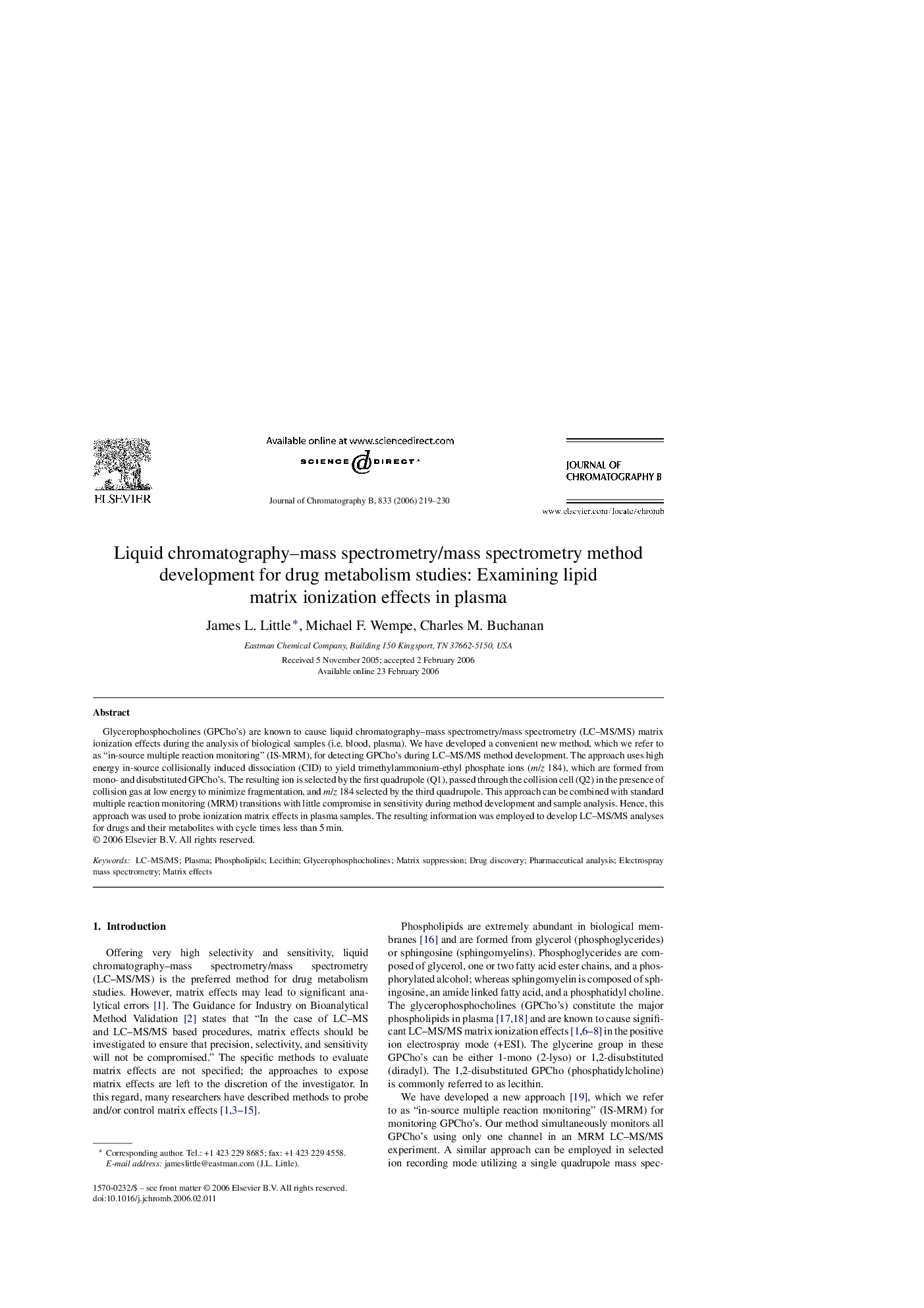| Article ID | Journal | Published Year | Pages | File Type |
|---|---|---|---|---|
| 1216127 | Journal of Chromatography B | 2006 | 12 Pages |
Glycerophosphocholines (GPCho's) are known to cause liquid chromatography–mass spectrometry/mass spectrometry (LC–MS/MS) matrix ionization effects during the analysis of biological samples (i.e. blood, plasma). We have developed a convenient new method, which we refer to as “in-source multiple reaction monitoring” (IS-MRM), for detecting GPCho's during LC–MS/MS method development. The approach uses high energy in-source collisionally induced dissociation (CID) to yield trimethylammonium-ethyl phosphate ions (m/z 184), which are formed from mono- and disubstituted GPCho's. The resulting ion is selected by the first quadrupole (Q1), passed through the collision cell (Q2) in the presence of collision gas at low energy to minimize fragmentation, and m/z 184 selected by the third quadrupole. This approach can be combined with standard multiple reaction monitoring (MRM) transitions with little compromise in sensitivity during method development and sample analysis. Hence, this approach was used to probe ionization matrix effects in plasma samples. The resulting information was employed to develop LC–MS/MS analyses for drugs and their metabolites with cycle times less than 5 min.
